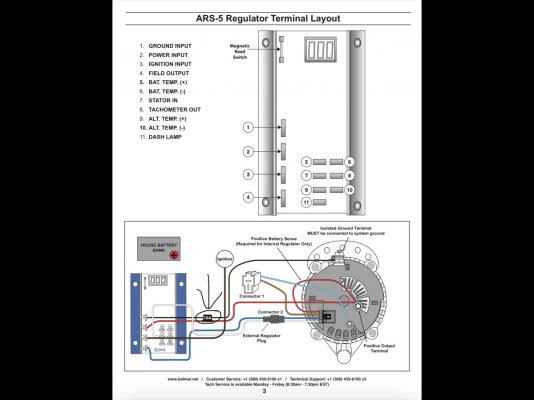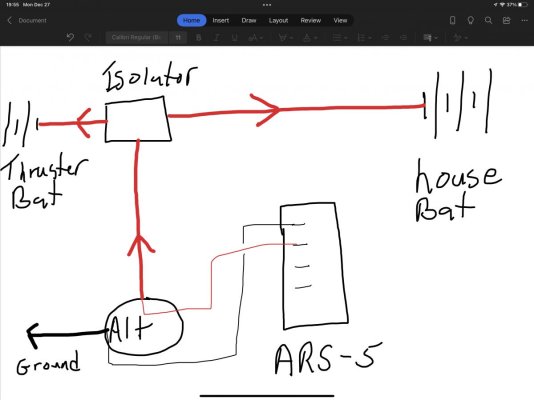Diverrob
Senior Member
Good day everyone and Merry Christmas!
I currently have a Balmar ARS-5 external regulator working my Balmar 150A alternator. I have gone through the advanced programming and I believe I have it where it should be. After a couple years of running it the only thing I can’t seem to do is have the voltage sensing come from the battery post, it needs to be coming from the back of the Alternator. When connected to the battery post the fuse pops every time I use the thrusters (which I thought were isolated but seem to get pass the isolator when on the post). I also have the SG 200 smart meter which I like and use with the Bluetooth app.
My question is upgrading to the new MC 618 worth the trouble (and cost)? This is what I see as pro vs con…
Pro
Independent voltage sensing for better charge performance
Integration with the SG 200 App for remote monitoring
Simple programming with the Bluetooth App
A little future proofing with the ability to handle Firefly and Li batteries
Con
Price as I already have a perfectly working ARS-5
Potential little gain in efficiency of charging
“Future proofing” too early as my batteries will be with me for 3-4 more years
I’m interested to hear from the hive mind on this issue, cheers and thanks
Rob
I currently have a Balmar ARS-5 external regulator working my Balmar 150A alternator. I have gone through the advanced programming and I believe I have it where it should be. After a couple years of running it the only thing I can’t seem to do is have the voltage sensing come from the battery post, it needs to be coming from the back of the Alternator. When connected to the battery post the fuse pops every time I use the thrusters (which I thought were isolated but seem to get pass the isolator when on the post). I also have the SG 200 smart meter which I like and use with the Bluetooth app.
My question is upgrading to the new MC 618 worth the trouble (and cost)? This is what I see as pro vs con…
Pro
Independent voltage sensing for better charge performance
Integration with the SG 200 App for remote monitoring
Simple programming with the Bluetooth App
A little future proofing with the ability to handle Firefly and Li batteries
Con
Price as I already have a perfectly working ARS-5
Potential little gain in efficiency of charging
“Future proofing” too early as my batteries will be with me for 3-4 more years
I’m interested to hear from the hive mind on this issue, cheers and thanks
Rob


